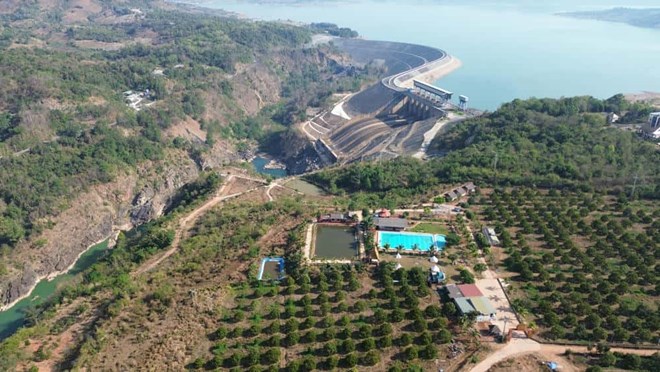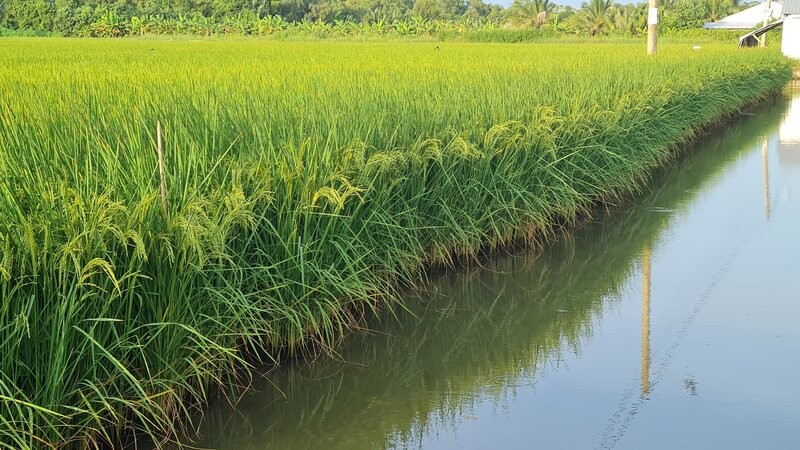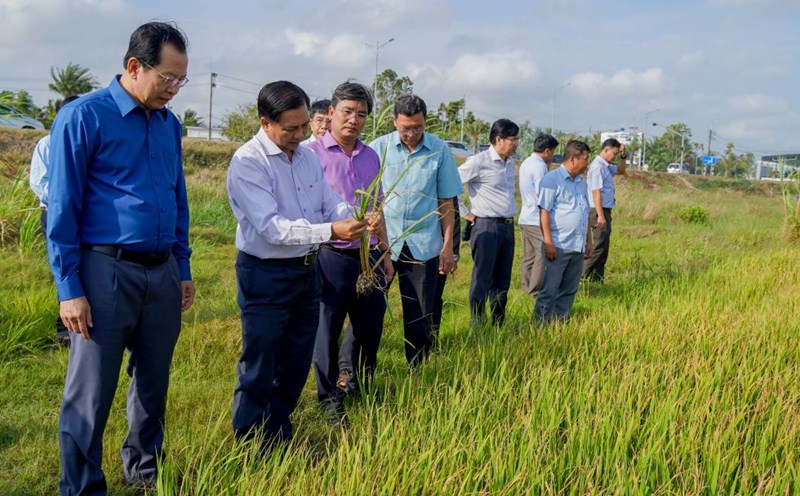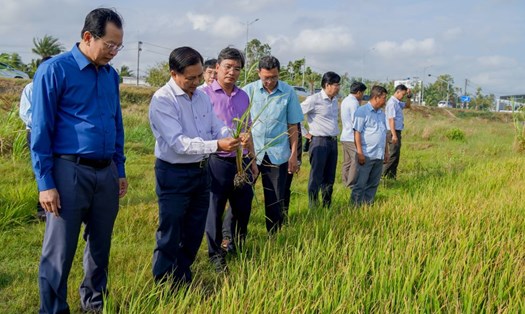Based on forecasts on weather trends as well as actual situations, the Department of Irrigation Management and Construction has made a assessment of drought, water shortage, and saline intrusion in April. Accordingly, the mountainous areas of the North, Midlands and the Northern Delta and North Central regions basically have water sources to ensure supply for production.
In the South Central region, basic water sources ensure supply for agricultural production. However, at Ong Kinh Lake (Ninh Thuan), because the lake's water level has dropped to the dead water level, it is necessary to proactively exploit groundwater to pump water for waterproof irrigation in the coming time.
In the Central Highlands, basic water sources ensure supply for agricultural production. However, there may be local droughts and water shortages at some small reservoir works, dam works and areas outside irrigation works.

Meanwhile, the Southeast region is currently in the peak of the dry season, forecasting the average storage capacity of the reservoirs until the end of April reaches about 54% of the design capacity. With the amount of storage of existing reservoirs and forecast rainfall in the coming time, the basic water source will ensure water supply for agricultural production.
However, with the forecast of widespread heat waves likely to occur from April 2025, there is a risk of drought and localized water shortage in the late dry season in the provinces of Binh Phuoc, Dong Nai, Ba Ria Vung Tau with a total affected crop area of about 3,000-5,000 hectares.
In general, drought and dehydration in the area in 2025 at a "slight drought", affecting agricultural production is not large, the highest time affected by the end of the dry season (April), the subjects affected are mainly perennial crops outside the irrigation area in charge of irrigation.
Regarding the forecast of saline intrusion in the Mekong Delta (Mekong Delta) in April 2025, the Department of Management and Construction of irrigation works said that in the Mekong estuaries, saline intrusion tends to decrease compared to March 2025. According to the report of the Southern Institute of Irrigation Science, saline intrusion in the Mekong River has passed, forecasting from now until the end of April, the flow from upstream to the Mekong Delta increased sharply, saline intrusion tends to decrease.

Within a distance from the sea of 30-40km or more, there is a possibility of frequent fresh water appearance, which is favorable for irrigation works to collect water, especially during low tides.
A representative of the Department of Irrigation Works Management and Construction said that they have sent a document to the Departments of Agriculture and Environment of provinces and cities in the Mekong Delta region to strengthen the operation of irrigation works to collect water for agricultural production and people in the Mekong Delta.











